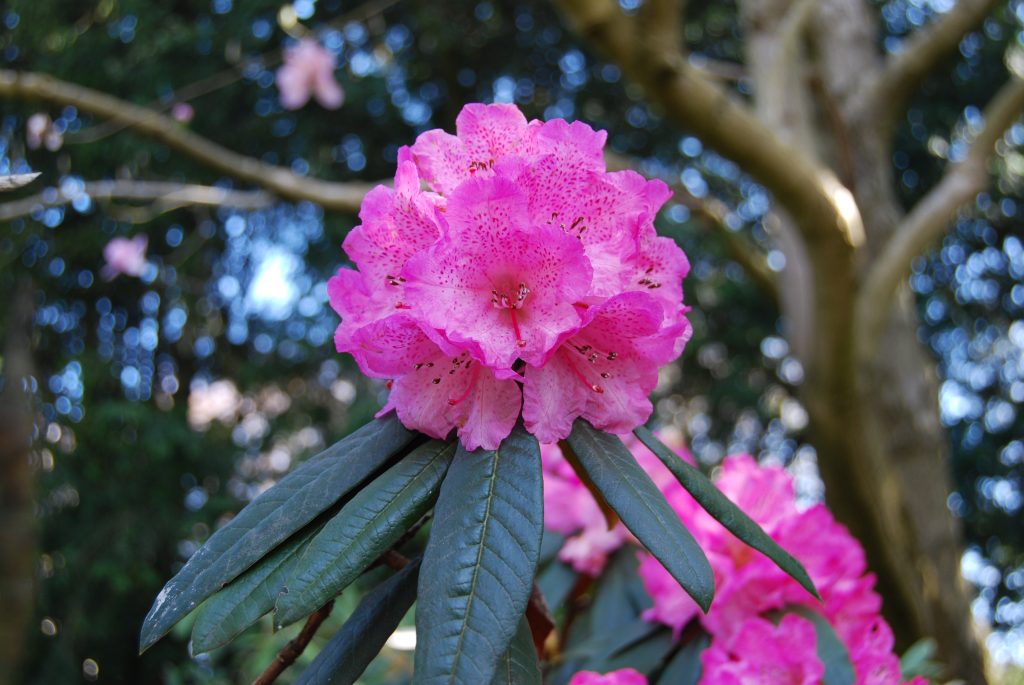Nepals national flower
This Rhododendon was planted by the Nepalese Ambassador during his visit in 2010 and it’s a symbol of the long connection that our Botanic garden has with Nepal, stretching back to 1802. Rhododendron arboreum is called Lali gurans in Nepali, and is Nepal’s much-loved national flower. Its bright red flowers are a welcome sign of spring and people go sightseeing in the hills to see the flowering trees and villagers collect the flowers to sell to passing travellers and for urban markets. Flowers are offered at temples and decorate houses, and young girls and ladies like to wear them in their hair.
In the midhills the flowers are deep red, but at higher altitudes they are paler, almost white, and the undersides of the leaves turn rusty brown. It’s the higher altitude forms that we can grow in Edinburgh’s cool climate, so you will have to travel to Nepal to see the magnificent lowland trees covered in blood red blooms. The flowers can be eaten, made into pickles, dried for tea, and even chewed to treat dysentery – but you need to make sure you have the right species of Rhododendron, as some Rhododendrons have poisonous nectar. Other parts of the plant are used for a wide range of purposes. A fish poison can be made from the young leaves, and the juice is sprinkled on mattresses to kill bed bugs. The hard, durable, fine-grained wood is prized for making bowls, spoons and furniture, and when it’s burnt, it provides long-lasting heat, and so it is extensively used for firewood and to produce charcoal.
Rhododendrons are being lost from the wild because of the over-collection of wood and habitat degradation. Nepal’s national flower is also an indication of climate change, as people in Kathmandu are noticing that the flowers appear earlier each year, and studies of annual growth rings (dendrochronology) of old Rhododendron trees at high altitude are revealing the impact of climate change dating back many decades.


Prashant
I will find him
YADAV
I am from nepal and i love national flower of nepal RHODODENDRON…